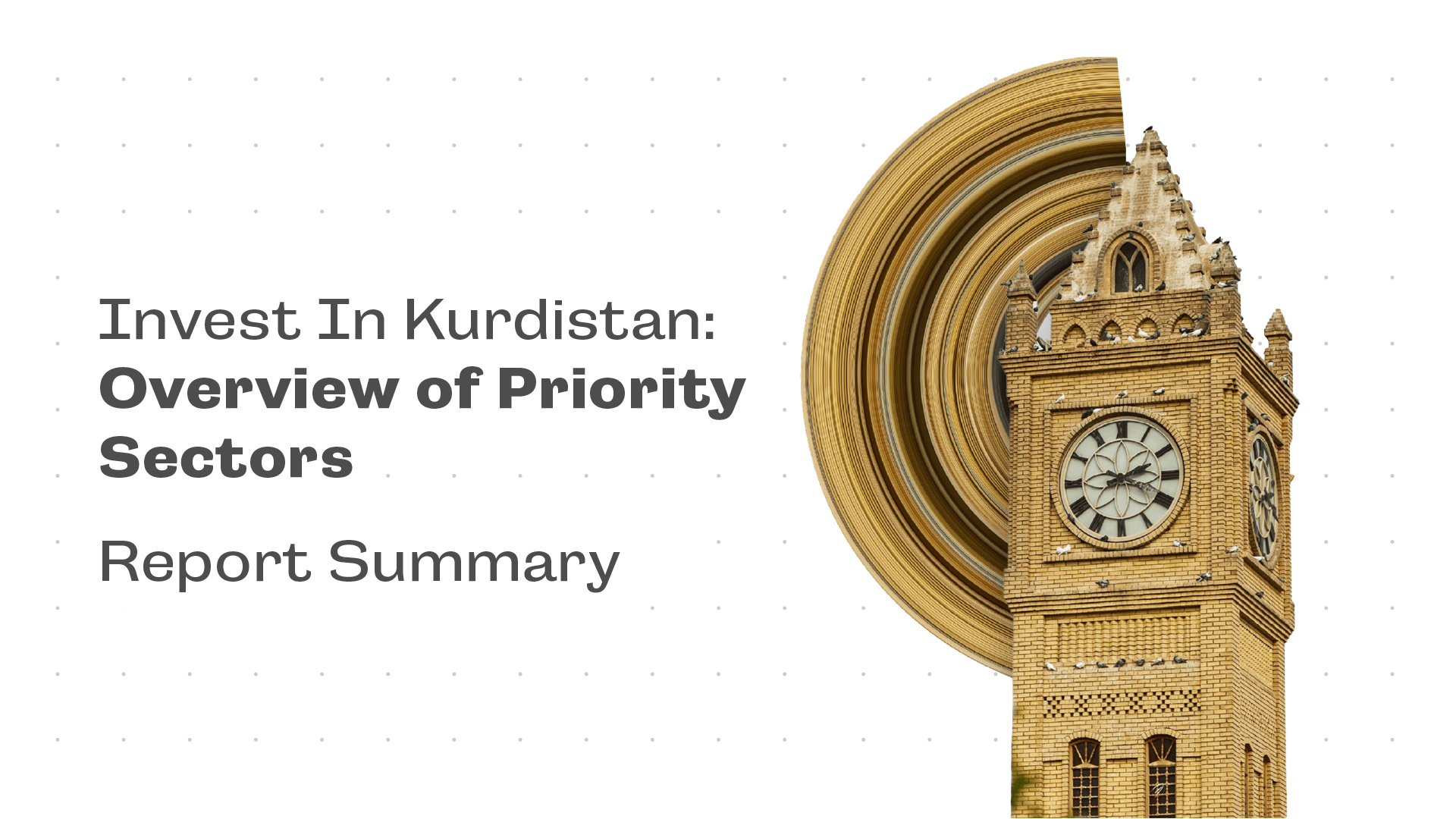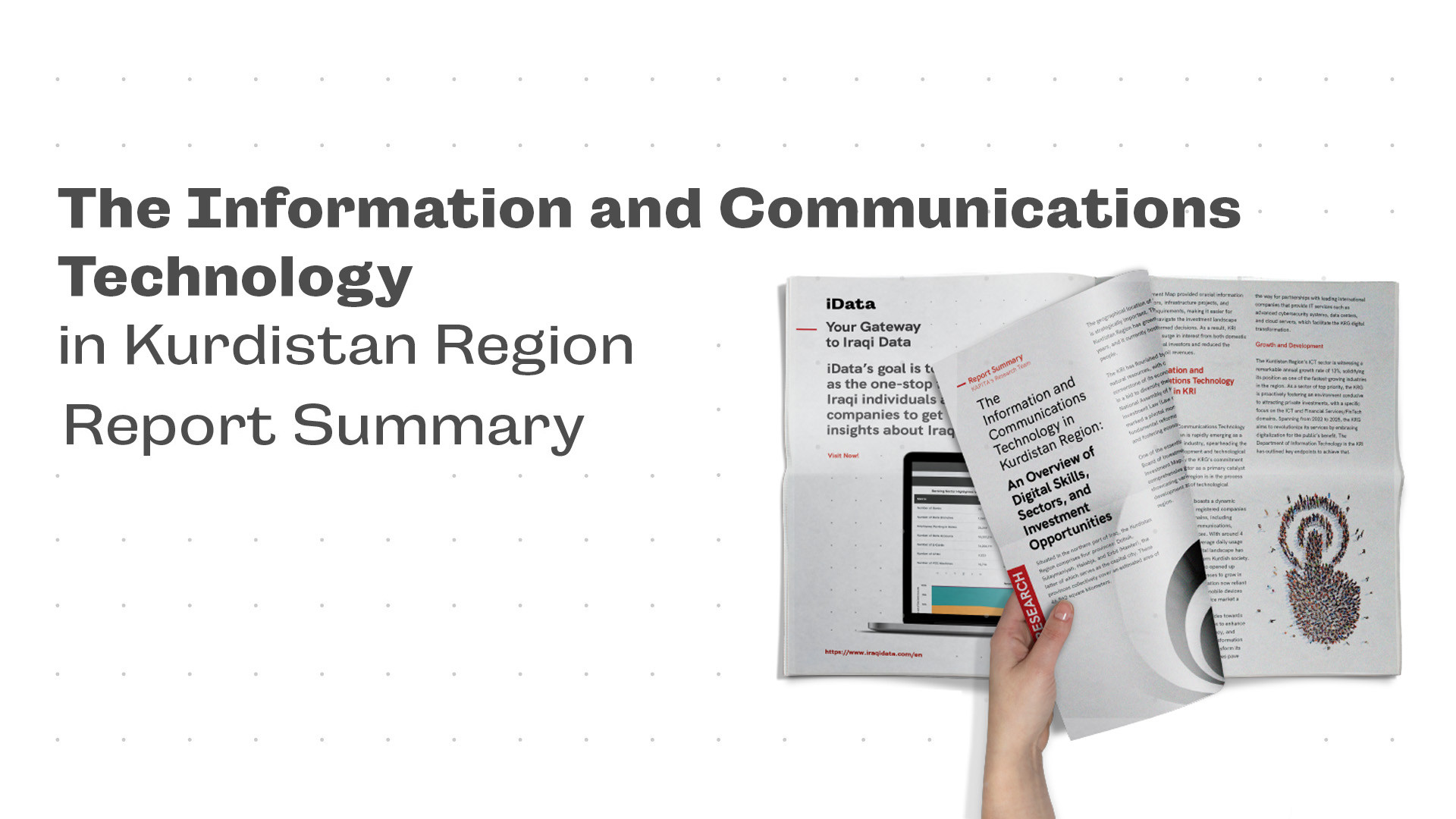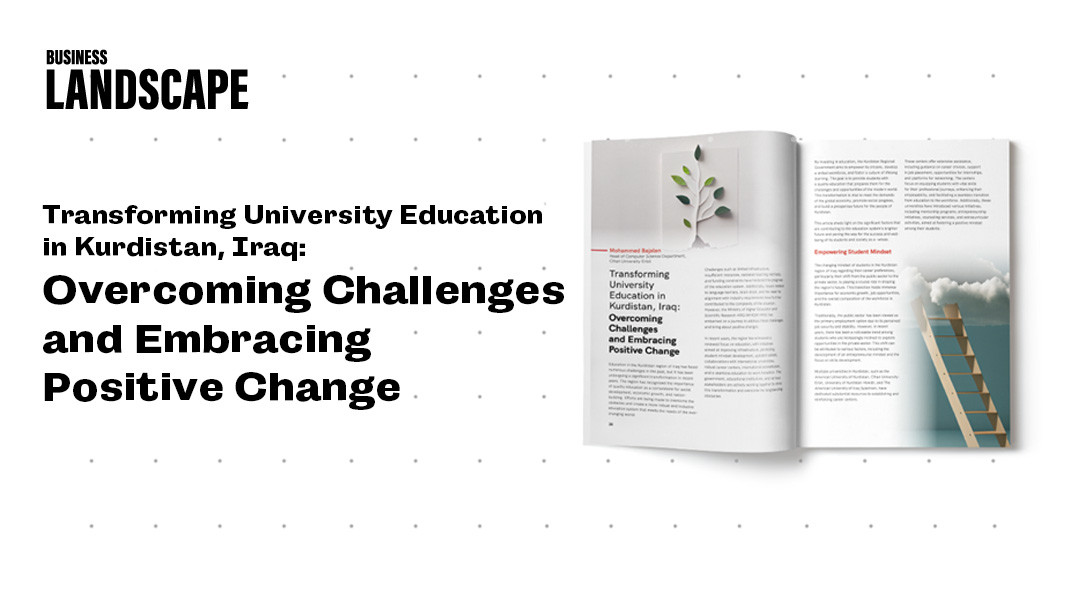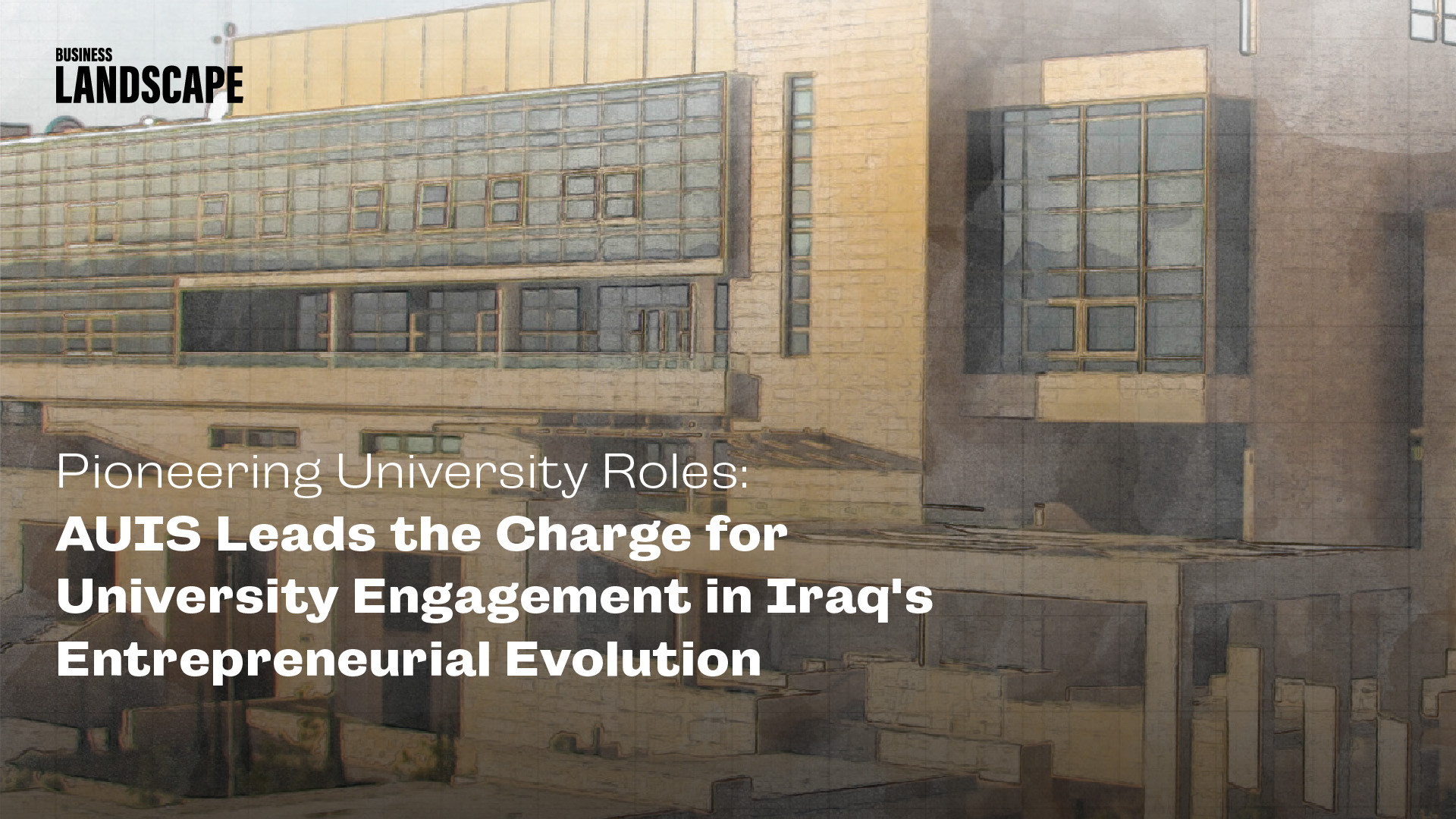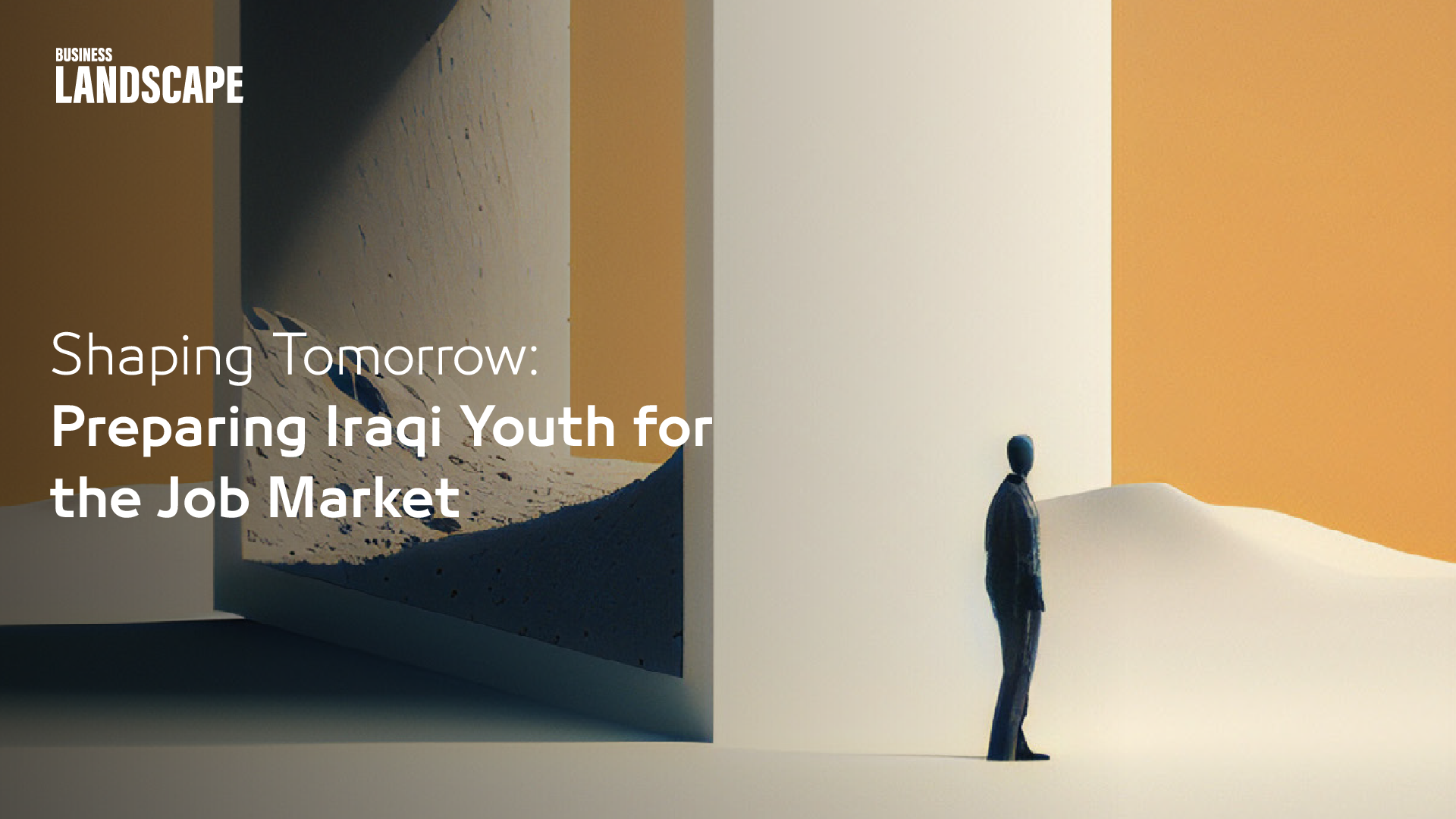Safwa Salim
Executive Editor, Business LANDSCAPE
The development of the Iraqi private sector has been the focus topic for our ecosystem for years; numerous attempts, initiatives, projects, supports, and funds have been trying to foster the growth of the private sector in different aspects. Those efforts are mainly trying to bridge the skills gap between the human workforce and the job market as it seems this is one of the most critical problems that is hindering the growth of the private sector. Therefore, many business and entrepreneurship support organizations, training institutes, and educational institutes have been channeling their efforts to address this gap.
Through further research and surveys conducted by stakeholders in the ecosystem, including one conducted by KAPITA in 2021, “The Reality of Information and Communication Technology In Iraq: Ecosystem Reflection, Challenges, and Opportunities,” indicates that this gap between the private sector and the workforce is the accumulation of different factors including the inadequate education system, reliant mindset, insufficient self-investment, reluctance to change, English language barrier, lack of soft skills and advanced technical skills, brain immigration, and others.
While all the mentioned above are accurate, there is another aspect to this issue.
The Iraqi private sector has many fallouts that are deterrent factors for the workforce to join. This other side of the coin should not be dismissed. It requires just as much attention to address this issue as much as the issue of human resources. While those factors fall under many different themes that can range from working conditions, wages, labor rights, transparency, and culture, one that is often the most neglected is the psychological safety of the workplace and its significance in the well-being of both employees and organizations.
It is also essential to remember that the Iraqi population is very youthful. According to the 2021 statistics of the Central Statistical Organization of Iraq, around 40% of the population is under the age of 15. While 20% are between the ages of 15-24, which represent the youth population of the country, and another 20% fall between the ages of 25-34. This means that the current workforce is mostly constituted of young millennials, while the fresh graduates and the new workforce who recently joined the job market are Gen Z.
Regardless of the differences between the two generations, the two have many similarities when it comes to work preferences. According to the Deloitte Global 2022 Gen Z & Millennial Survey, the top reason for staying at an organization was good work/life balance with 32% for Gen Z and 39% for millenials, followed by learning and development opportunities with 29% for both, and financial benefits which ranked third with 24% and 27% for Gen Z and millennials respectively, whereas positive work culture including safety, feeling of belonging, and value, ranked fourth with 24% for both generations. The aforementioned numbers indicates that the current and upcoming workforce values more than just salaries, and puts a high weight on other benefits such as work environment and culture, and growth opportunities.
Therefore, organizations should take into consideration the importance of creating a better work environment, strive to build a psychologically safe atmosphere to support the well-being of the employees. Which, consequently, leads to higher productivity, better performance, and increases the retention rate of bright talents.
However, to understand how organizations can create better work environment that is psychologically safe, we need to know precisely what does psychological safety mean? Psychological safety was first researched during the late 1960s, similar to many other organizational behavior and psychological topics. Scholars Warren Bennis and Edgar Shein defined the concept psychological safety in 1965 as reducing interpersonal risk in their paper “Personal And Organizational Change Through Group Methods: The Laboratory Approach.”
Later in 1990, Professor William Khan defined the employee engagement theory, where people engage, express and employ their personal selves, or disengage, withdraw and defend their personal selves, and the psychological conditions that are linked to it, which are meaningfulness, safety, and availability.
In 1999, the term “Psychological Safety” became popular by Harvard Leadership and Management professor Amy C. Edmondson who built on the work of scholars before her and defined psychological safety in her paper “Psychological Safety and Learning Behavior in Work Teams” as “ a belief that one will not be punished or humiliated for speaking up with ideas, questions, concerns or mistakes, and that the team is safe for interpersonal risk-taking.” The paper studied 51 teams in manufacturing companies and found that teams with higher performance were the ones that made more mistakes.
In 2012, Google conducted its project “Aristotle,” that studied many diverse teams working at Google and tried to understand what are the factors behind successful teams. The project concluded with five elements ordered according to importance, the first being psychological safety, followed by dependability, structure, clarity, meaning, and impact.
There are many components to psychological safety, but essentially, it is an environment built on trust, respect, open communication, transparency, and inclusion, where people feel supported to take risks and make mistakes and feel valued and appreciated at their workplace.
Here are a couple of not so secret secrets to increasing the psychological safety of the workplace:
- Fostering Inclusion and Authenticity
We spend the majority of our day working, and our jobs have taken a significant share of our lives. It is important that those jobs allow us to be our authentic selves without pretending to play a role that does not resonate with us. Hence, organizations starting with their leaders, should model authenticity in the way they lead and interact with others.
Furthermore, organizations are mostly working in diverse teams; it is critical that this diversity is celebrated and not discriminated against and everyone feels included. That means letting go of our prejudices and judgment, learning to listen to others more attentively, and accepting our differences. This might be a challenging exercise at first; however, acknowledging our prejudices and biases is a step in the right direction. Eventually, this will reinforce the sense of belonging to the organization and reduce negative morale.
- Embracing Mistakes
Mistakes and fallouts are just a natural by-product of any job or process. It is improbable to be avoided entirely even with the highest level of professionals or experts and even from the top management. Reframing mistakes as learning opportunities and seizing the chance to optimize and improve operations instead of punishing them would encourage employees to take more risks and be more innovative, instead of creating a culture of fear and anxiety, where employees feel unsafe and shy away from taking responsibility or trying anything new. This responsibility also falls on the shoulders of management to admit their fallibility and embrace it, allowing the organization to follow in their steps to do the same.
- Encouraging All Voices
Organizations should create a more open space for their teams to participate and invite people to be a part of the conversation. It is significant to empower people to take an active role in the dialogue and the decision-making process, and to make sure they are indeed heard. Moreover, encourage those voices even when they are challenging certain ideas, suggesting changes, or questioning certain decisions. Adopting a curious mindset and asking people for their contributions and valuing them will not only enrich but bring more perspective to the table and will also reinforce the collaboration among the team members to perform better. This will also strengthen the morale of the team as they feel valued and appreciated, and their contributions matter, fulfilling their sense of purpose within the organization.
- Practice Empathy
The rapidly changing world of today introduces many personal struggles that we have to deal with on a day-to-day basis, not to mention the volatile state of the world, from recovering from the pandemic to being on the doors of a possible recession. The current system is not designed to be supportive of the well-being of people. In addition, we might have been stripped of many humane virtues that made us view people for the work they do but not the person they are. Leaders and managers should practice empathy and try to understand their employees and continuously check with them, address their concerns and provide support where possible.
High Psychological safety creates an organization that operates in the learning zone; the learning zone is where the employee's motivation is high, and the psychological safety of the organization is also high. This, in turn, will help the organization to improve and develop continuously.
All of the aforementioned is not some secret recipe to improve the psychological safety of an organization. However, we might neglect those obvious necessary practices or underestimate their impact on the well-being of employees and their effect on employees' retention, performance, and team efficiency. Regardless of those countless benefits that reflect directly on the performance of the organization, it is important to remember that at the end of the day, it is the people that matter. We live in a complex modern society that champions hustle culture and glamorizes workaholism and is designed to generate profit, turning a blind eye to the downsides, which makes it easy to forget about the core of what it matters in life, the wellbeing of people.

